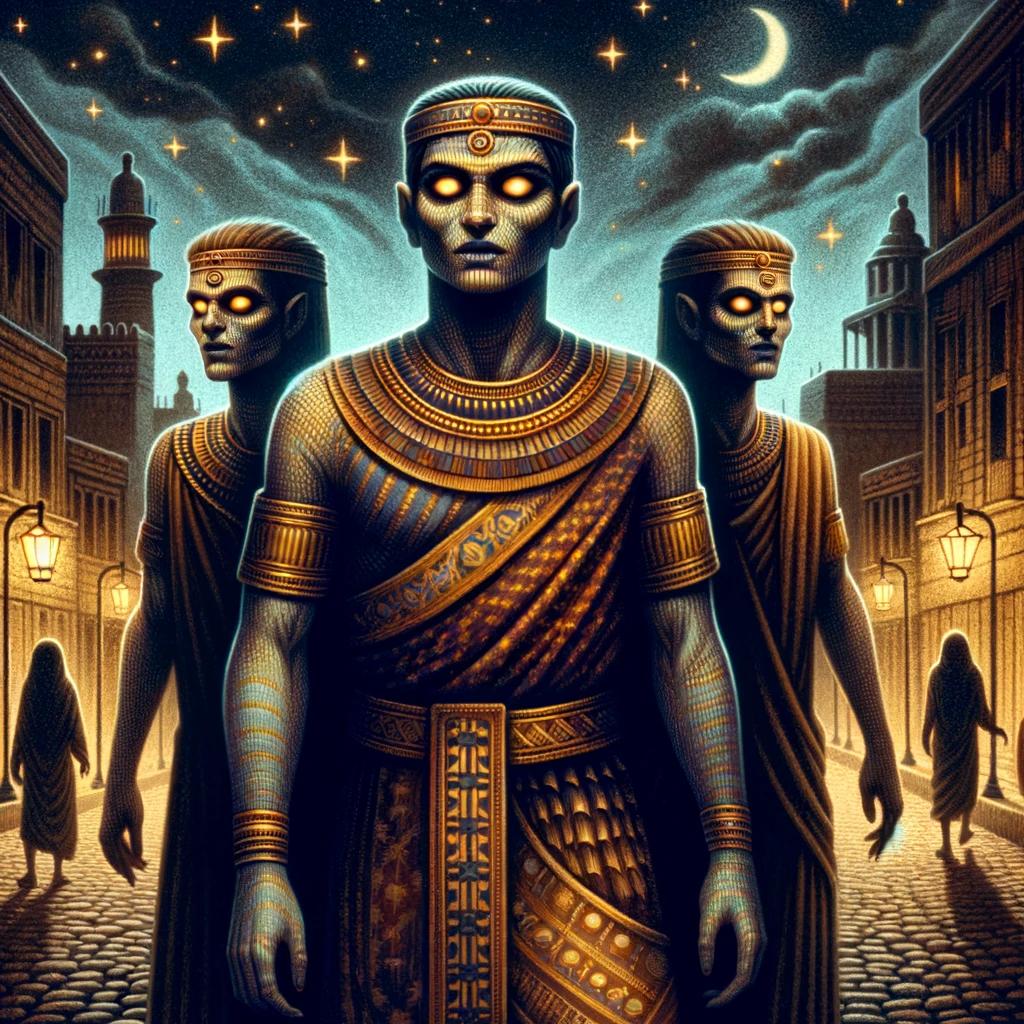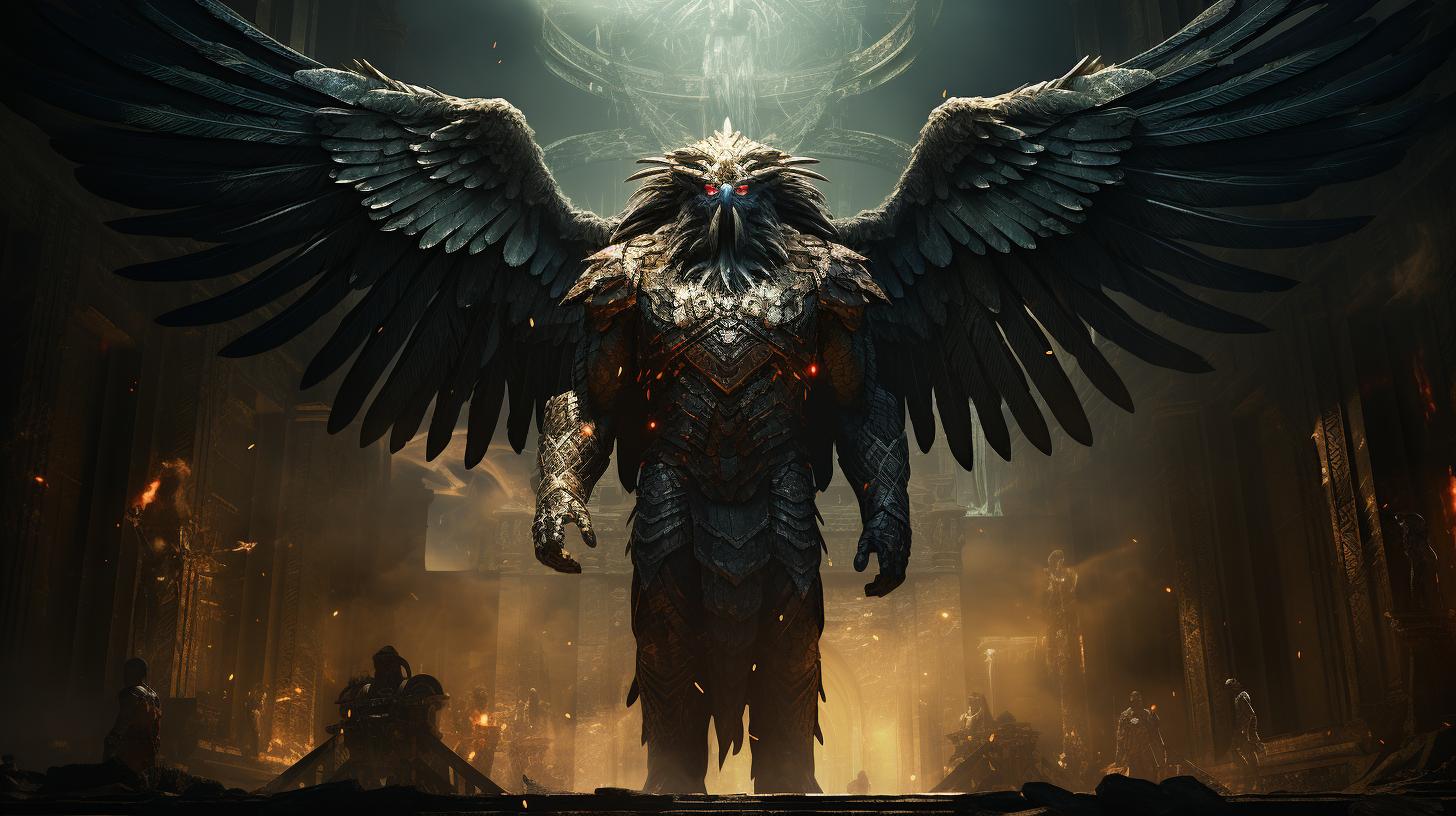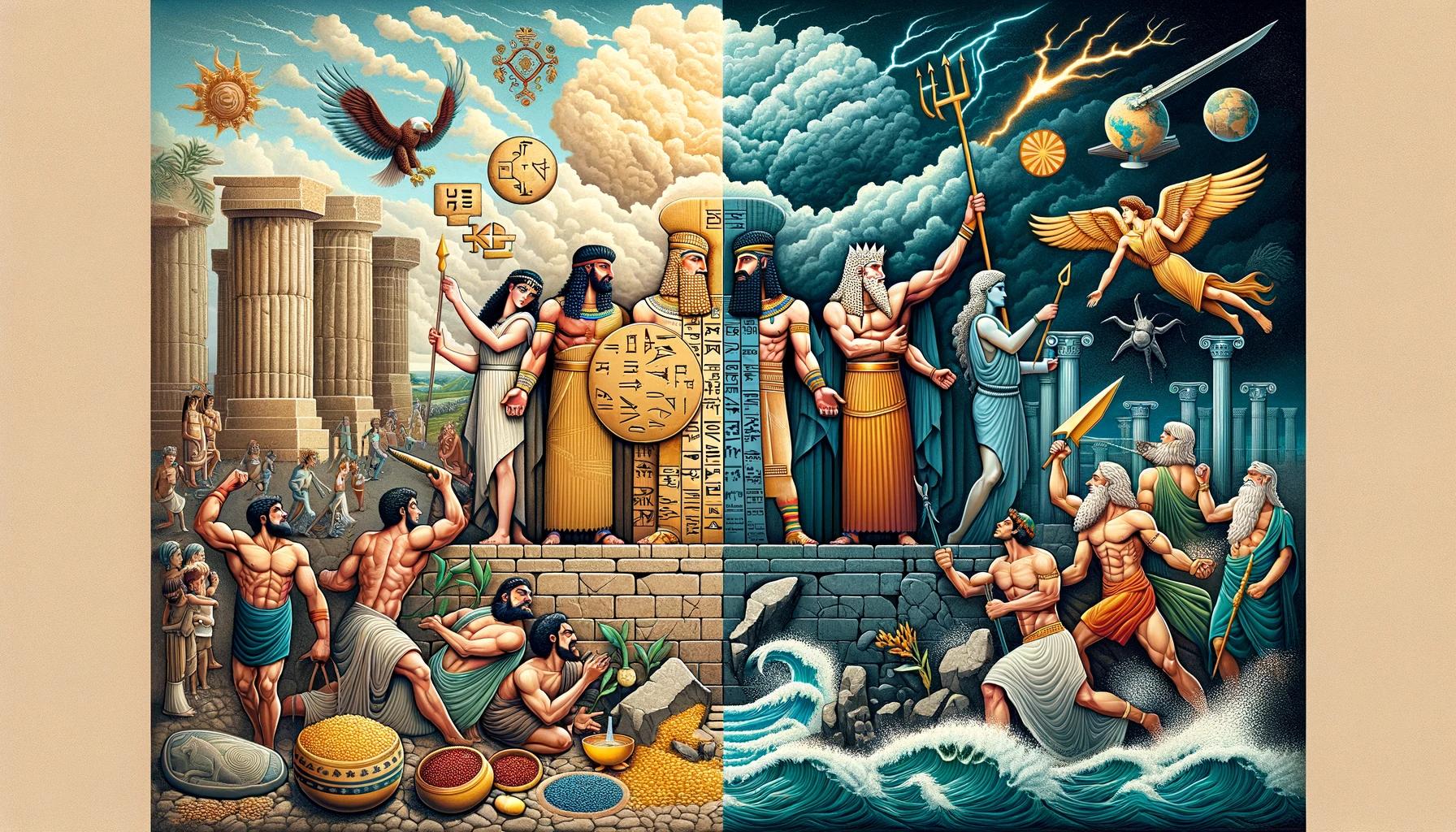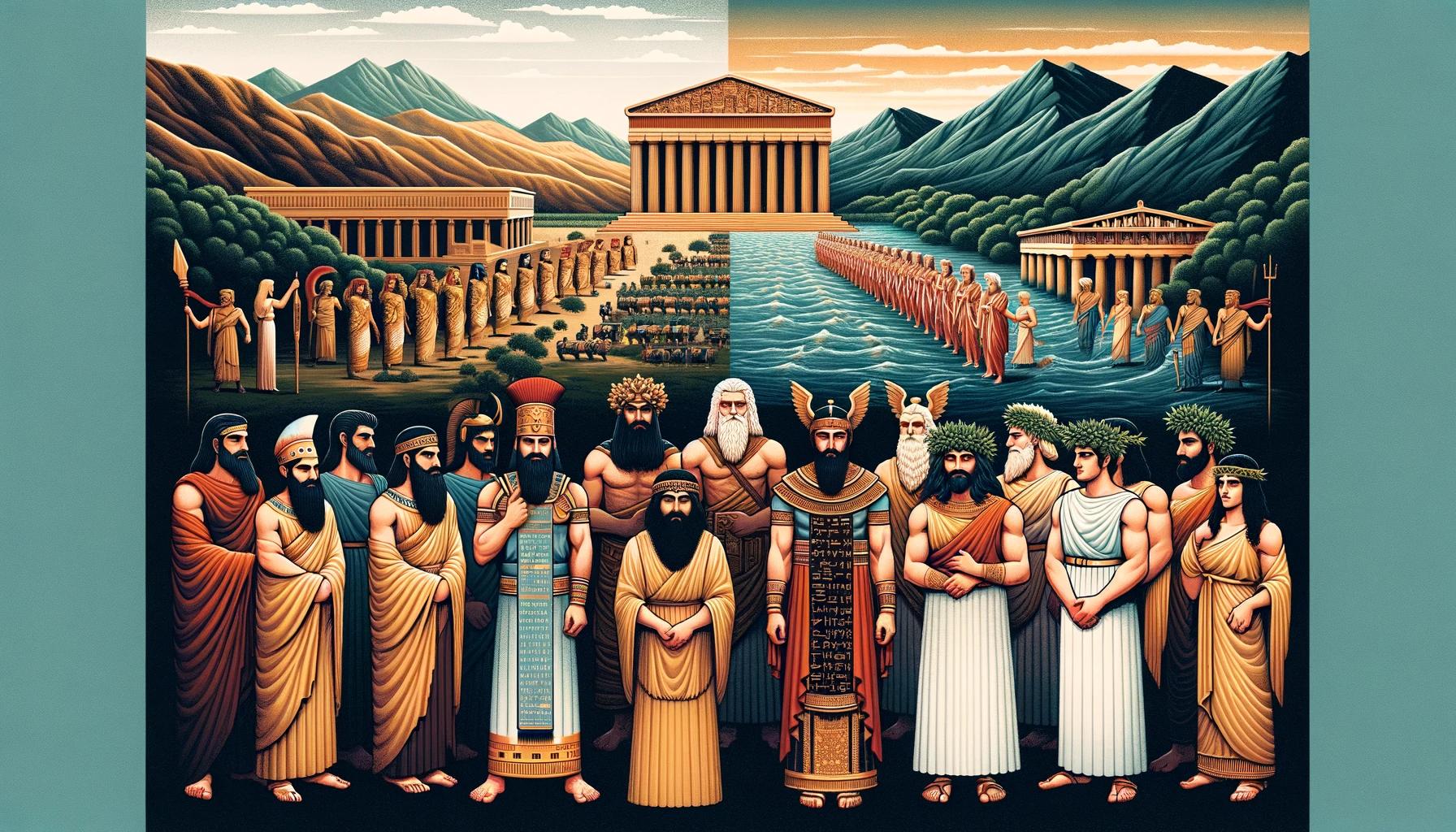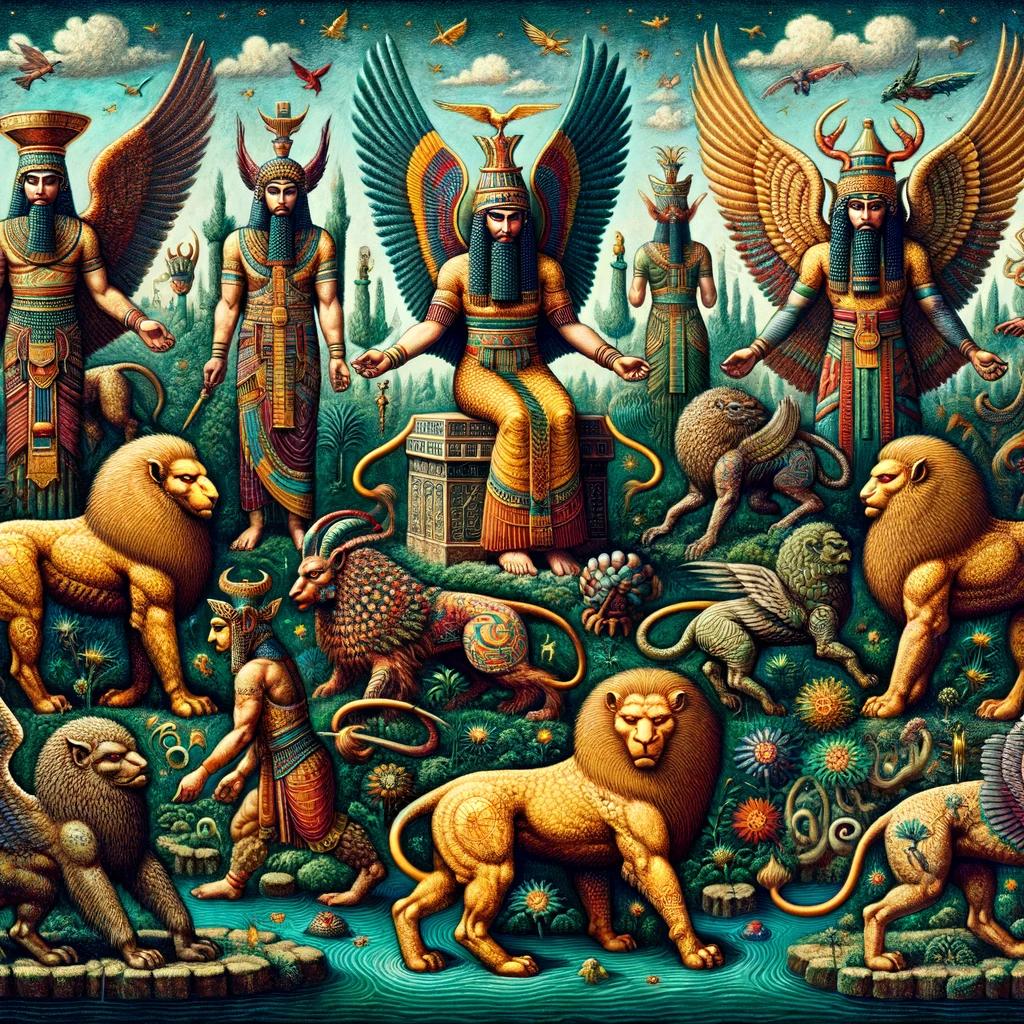Labartu Demon: Exploring the Mesopotamian Female Demon and its Dark Powers

Labartu Demon is a mysterious and intriguing figure in Mesopotamian mythology. Known as the Female Demon of Fever, Labartu is often associated with Lilitu and Lilith. She is depicted with serpents in hand, known for her attacks on children, mothers, and nurses.
Labartu’s dark powers are detailed in ancient texts, highlighting protective measures taken against her. This article explores Labartu’s origins, characteristics, and cultural impact, shedding light on her prominence in Babylonian beliefs.
Additionally, it delves into Labartu’s representation in literature, art, demonology, and its influence on societies and religious beliefs throughout history.
Labartu Demon: Exploring the Mesopotamian Female Demon
In this section, we delve into the captivating figure of Labartu, a fascinating Mesopotamian female demon. We explore her origins, mythology, and the various depictions that have shaped her representation throughout history.
Origins and Mythology
Labartu’s origins lie in ancient Mesopotamian mythology, where she emerged as a powerful and malevolent entity. We uncover the ancient beliefs and tales surrounding Labartu’s creation and her significance in the pantheon of Mesopotamian deities.
Characteristics and Representation
Labartu possesses unique characteristics that distinguish her as an ominous force. We uncover the descriptions and depictions of Labartu’s monstrous appearance, including her entangled hair and sharp fangs. Through ancient texts and artifacts, we analyze how artists and writers portrayed this fearsome demon in their works.
Associations with Lilitu and Lilith
Labartu’s connection to other influential female demons, such as Lilitu and Lilith, is a topic of great interest. We explore the overlapping traits, connections, and possible transformations between these entities, shedding light on the complex relationships within the Mesopotamian demonology.
Labartu’s Actions: Attacks on Children, Mothers, and Nurses
Labartu, the Mesopotamian Female Demon, is notorious for her sinister actions targeting children, mothers, and nurses. Legends and stories depict her misdeeds, causing fear and devastation among communities. Labartu’s manifestation as a demon of fever intensifies her destructive influence, plaguing vulnerable individuals with illness and suffering.
Fortunately, protective measures against Labartu have been developed over time, offering some solace and defense against her malevolent intentions.
Legends and Stories of Labartu’s Misdeeds
Ancient tales recount Labartu’s ruthless nature as she preys upon innocent victims. Stories narrate instances of her attacks on children, snatching them away from their families and leaving devastation in her wake.
Mothers, overwhelmed by grief, seek vengeance against the demon who stole their precious little ones. These tales serve as cautionary reminders of Labartu’s malicious intentions, urging communities to remain vigilant.
Labartu’s Manifestation as a Demon of Fever
Labartu’s manifestation as a demon of fever amplifies her ability to inflict harm.
Fevers become her weapon of choice, causing physical and emotional distress among her victims. Labartu’s presence heightens the vulnerability of infants, mothers, and caretakers alike, reminding society of her malevolence during the early days of a child’s life.
The demon’s feverish grasp evokes a sense of urgency to protect and shield those at risk from her insidious influence.
Protective Measures against Labartu
- Creation of Sacred Images: Crafted representations of Labartu serve as a means of protection, instilling a sense of spiritual power against her malevolent forces.
- Ancient Incantations and Chants: The recitation of sacred spells and invocations safeguards individuals from Labartu’s harmful intent, invoking divine assistance to ward off her influence.
- Amulets and Talismans: Engraved stone amulets provide additional protection, acting as potent guardians against the demon’s attacks on mothers and their infants.
- Limiting Isolation: Recognizing Labartu’s heightened power during the first nine days after childbirth, communities avoid leaving mothers and their newborns unattended, prioritizing their safety during this vulnerable period.
These protective measures aim to mitigate the harm caused by Labartu, offering solace to those who face her threat.
By taking these precautions, communities strive to create a shield against the demon’s merciless actions, safeguarding the well-being of children, mothers, and nurses alike.
Continue reading to explore further insights into Labartu’s significance, her portrayal in ancient texts, and her enduring cultural impact.
Labartu in Mesopotamian Texts and Beliefs
Labartu, the Mesopotamian Female Demon, has left a significant imprint in the texts and beliefs of ancient civilizations. This section delves into the portrayal of Labartu in Mesopotamian texts and explores her connection to other demons in Babylonian mythology.
Assurbanipal’s Library and the Book on Labartu
Assurbanipal, the king of Assyria, housed an extensive library that contained a wealth of magical texts from across Babylon. Within this collection was a book dedicated to Labartu. These texts shed light on Labartu’s residence in swamps or mountains and her penchant for attacking children and causing spontaneous abortions.
They also speak of her manifestation as a demon of fever and offer insights on protective measures employed against her.
Rituals and Incantations for Protection against Labartu
Mesopotamian societies developed rituals and incantations to shield themselves from Labartu’s harm. These practices involved invoking gods, employing fire and water to ward off the demon, and creating images and amulets of Labartu to repel her malevolence.
Mothers and infants were safeguarded with engraved stone amulets, and it was customary to avoid leaving them alone during the first nine days after birth, when Labartu’s power was believed to be strongest.
Labartu and Other Demons in Babylonian Mythology
In addition to Labartu, Babylonian mythology features a host of other demons associated with various ailments and afflictions. Utukku, Shedu, Etimmu, and Lilit are notable among them. These demons possessed the ability to assume human or animal forms, and their descriptions provide intriguing insights into the ancient beliefs surrounding evil entities.
Lilith, often considered Adam’s demonic lover in Hebrew tradition, is also mentioned, alongside a Babylonian curse invocation that invokes the wrath of gods against Labartu and other malevolent entities.
Cultural Impact of Labartu in Literature and Art
The figure of Labartu Demon has left a lasting impact on literature and art throughout history.
From ancient times to the present day, Labartu’s presence can be seen in various creative expressions, showcasing her captivating and haunting nature.
Labartu in Ancient and Modern Literature
In ancient Mesopotamian literature, Labartu’s character was often intertwined with other deities and demons, creating a rich tapestry of myths and legends. She was depicted as a fearsome entity associated with the affliction of children and mothers.
In more recent times, Labartu’s influence can be seen in modern fantasy literature. Authors have drawn inspiration from her demonic attributes to create compelling tales of female demons, weaving elements of horror and supernatural into their narratives.
Visual Representations of Labartu in Artworks
Labartu’s striking image has been captured in various forms of artistic expression. Ancient Mesopotamian art often depicted her with serpents in hand, emphasizing her malevolent power. These intricate artworks served as a visual medium for conveying her role as a demoness of fever and maternal affliction.
In contemporary art, Labartu continues to captivate audiences. Artists explore her complex nature through paintings, sculptures, and mixed media, offering their interpretations and insights into her dark persona. These visual representations engage viewers and contribute to the ongoing fascination surrounding Labartu.
Labartu in Popular Culture: Films and Video Games
Labartu’s influence extends beyond the realms of literature and art into popular culture. She has found her way into films and video games, becoming a source of inspiration for thrilling stories and immersive gaming experiences.
From horror movies that explore the terror she inflicts upon unsuspecting victims to video games that incorporate Labartu as a formidable boss or antagonist, her presence adds depth and intensity to these entertainment mediums.
Labartu’s popularity in popular culture further solidifies her status as a captivating and enduring mythological figure.
- Labartu’s demonic nature has fascinated writers and readers alike, leading to her inclusion in both ancient and modern literature.
- Artworks throughout history have captured Labartu’s striking image, emphasizing her malevolent power as a demonic figure.
- Labartu’s influence extends into popular culture, where she has become a source of inspiration for films and video games, adding depth and intensity to these mediums.
Labartu Demon and its Role in Demonology and Exorcism
Labartu Demon plays a significant role in the realm of demonology and exorcism, where its classification, rituals, and significance are explored.
Understanding Labartu’s role in these domains sheds light on the practices employed to combat its malevolent influence.
Labartu’s Classification in Demonological Traditions
Labartu is classified as a powerful female demon within various demonological traditions. Scholars have examined its characteristics, abilities, and association with other demonic entities. By categorizing Labartu, practitioners and researchers gain insight into its unique attributes and the specific methods used to confront and expel its presence.
Exorcism Rituals and Practices Targeting Labartu
Exorcism rituals and practices targeting Labartu involve an array of techniques aimed at banishing the demon and protecting individuals from its harm. These rituals often employ incantations, prayers, symbolic tools, and the invocation of higher powers to counter and repel Labartu’s dark influence.
Understanding the specific rituals and practices employed can provide valuable insights into the methods used to combat Labartu’s malevolence.
Labartu’s Significance in the Study of Dark Spiritual Entities
Labartu’s existence and role in demonology and exorcism contribute significantly to the broader study of dark spiritual entities. By examining its characteristics, actions, and representation, researchers gain a deeper understanding of the complexities and variations within the realm of demons and demonic entities.
Labartu’s significance in this study extends beyond its individual identity, providing valuable insights into the broader supernatural landscape.
Societies and Religious Beliefs: Labartu’s Influence
Labartu, the enigmatic Mesopotamian Female Demon, has left a significant mark on ancient societies and religious beliefs. Her presence can be traced throughout various aspects, indicating her relevance and impact on human cultures.
From her role in ancient Mesopotamian religions to her influence on world religions and societies, Labartu’s existence has had cultural and historical implications that continue to fascinate and intrigue.
Labartu in Ancient Mesopotamian Religions
In the context of ancient Mesopotamian religions, Labartu holds a distinct position as a powerful and feared deity.
She is depicted as a force to be reckoned with, responsible for afflictions and misfortunes that plagued communities. Labartu’s role in these ancient belief systems highlights the significance of her character, reinforcing the beliefs and rituals associated with her worship.
Labartu’s Relevance in World Religions and Societies
Labartu’s influence extends beyond ancient Mesopotamian religions, permeating world religions throughout history. Her association with Lilitu and Lilith, as well as her characterization as a demonic figure, has resonated in various cultural and religious contexts.
Labartu’s presence in these belief systems has contributed to the shaping of religious narratives and practices, reflecting humanity’s enduring fascination with dark spiritual entities.
Cultural and Historical Implications of Labartu’s Existence
The existence of Labartu carries significant cultural and historical implications.
Not only does she provide insights into ancient Mesopotamian societies and their religious beliefs, but her influence on subsequent cultures and historical periods cannot be overlooked. Labartu’s presence in myths, rituals, and artwork illuminates the depths of human imagination and the enduring influence of ancient myths on contemporary culture.
Labartu’s Legacy: Historical Context and Impact
The historical context and impact of Labartu, the Mesopotamian Female Demon, reveal fascinating insights into ancient culture and belief systems. This section explores three aspects of Labartu’s legacy: her significance in the context of ancient Mesopotamian history, her connection to witchcraft and occult practices, and her influence on world religions and folklore.
Labartu in the Context of Ancient Mesopotamian History
Labartu holds a significant place in ancient Mesopotamian history, as she represents the fears and anxieties surrounding motherhood and the well-being of children. Through her portrayal in texts and artifacts, Labartu offers valuable insight into the cultural and societal concerns of the time.
Exploring her presence in religious rituals, medical practices, and societal norms provides a deeper understanding of the challenges and beliefs of ancient Mesopotamian communities.
Labartu’s Connection to Witchcraft and Occult Practices
The connection between Labartu and witchcraft, as well as occult practices, highlights the complex interplay between religion, magic, and societal fears.
Labartu’s association with dark spiritual entities and her role as a bringer of misfortune made her a figure of interest for those seeking to harness supernatural powers. Examining her involvement in ancient rituals and the depiction of magical practices in relation to Labartu sheds light on the spiritual and mystical beliefs of the time.
Labartu’s Influence on World Religions and Folklore
The influence of Labartu extends beyond ancient Mesopotamia, leaving a lasting impact on various world religions and folklore traditions. Her association with Lilith and Lilitu contributed to the development of beliefs surrounding demonic entities and female supernatural beings in different cultural contexts.
Exploring how Labartu’s mythology and characteristics have been incorporated into different belief systems and folktales provides valuable insight into the cross-cultural transmission and adaptation of mythological figures.
Labartu Demon and its Representation in Texts and Artifacts
In order to understand the significance of Labartu and her impact on Mesopotamian culture, it is essential to explore the various depictions of this female demon in ancient texts and artifacts.
These representations provide valuable insights into how Labartu was perceived and her role within the mythology of the time.
Mesopotamian Texts and Artifacts Depicting Labartu
Mesopotamian texts, such as the collection compiled by King Assurbanipal, offer glimpses into the existence of Labartu and her attributes. These texts describe her as a fearsome demon with serpents in hand, wreaking havoc on children, mothers, and nurses.
Artifacts, including statues and engravings, further depict her with terrifying features, tangled hair, and sharp fangs, emphasizing her monstrous nature.
Interpretations and Analysis of Labartu’s Depictions
Experts and scholars have analyzed the representations of Labartu in texts and artifacts to decipher the deeper meanings associated with her existence. Through these interpretations, Labartu is seen as a symbol of fertility, female empowerment, and the unpredictability of nature.
Her ferocious appearance and actions serve as warnings against the dangers faced by mothers and infants.
Significance of Labartu’s Presence in Archaeological Discoveries
The discovery of Mesopotamian artifacts depicting Labartu provides valuable evidence of the cultural and religious practices of ancient civilizations. These findings contribute to our understanding of the beliefs, rituals, and the role of demons in Mesopotamian society.
Labartu’s presence in archaeological discoveries highlights the enduring impact of her mythology and the importance of studying such supernatural entities in unraveling the mysteries of the past.
.














